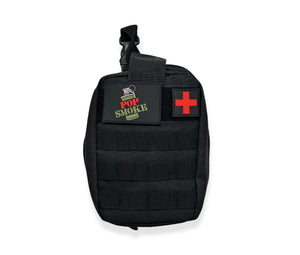Historic VICTUS NOX Mission Sets New Standard for Tactically Responsive Space
The success of the VICTUS NOX mission was a collaborative effort. (Courtesy photo by Firefly Aerospace)

A historic mission has set a new benchmark for Tactically Responsive Space (TacRS), demonstrating an end-to-end capability to rapidly respond to adversary aggression. From acquisition to on-orbit operations, the VICTUS NOX mission showcased seamless execution across various phases, establishing a model for future TacRS endeavors.
U.S. Space Force Chief of Space Operations Gen. Chance Saltzman lauded the mission’s swift progression, stating, “From the warehouse to on-orbit capability in a week. That’s tactically responsive.” Saltzman emphasized the significance of such capabilities in responding to irresponsible behavior on-orbit.
The Build Phase of the mission culminated in a Flight Readiness Review less than a year after contracts were awarded to Firefly Aerospace and Millennium Space Systems, a Boeing Company. Within this timeframe, the spacecraft was modified with an additional space domain awareness payload and prepared for launch.
OWB Double Mag Pouch for Glock 20, 21, 29, 30, 40, 41, H&K USP .45 & More - USA Made - Signature Double Magazine Carrier with Tek-Lok Belt Attachment

Against the backdrop of the Earth, Firefly Aerospace’s Alpha FLTA003 successfully deployed the VICTUS NOX satellite into orbit after launching Sept. 14, 2023, from Space Launch Complex 2 West (SLC-2W) at Vandenberg Space Force Base, Calif. (Courtesy photo by Firefly Aerospace)
Upon completion of the Build Phase, the team seamlessly transitioned into the Hot-Standby Phase, awaiting activation. On Sept. 8, 2023, the Activation Phase was executed within 57 hours, surpassing the 60-hour goal. Subsequently, the Alert Phase commenced, followed by an unexpected launch order on Sept. 13, 2023.
The Launch Phase met its goal of readiness within 24 hours, with liftoff occurring 27 hours after the launch order was received. The mission then proceeded to the Initialization Phase, surpassing the 48-hour goal by completing the phase in 37 hours. On-orbit operations began swiftly, with the VICTUS NOX team executing multiple maneuvers to conduct rendezvous, proximity operations, and space domain awareness activities.
The success of the VICTUS NOX mission was a collaborative effort involving personnel from multiple organizations within the Space Force, including Space Delta 12, Space Safari, 20th Space Surveillance Squadron, and partners Millenium Space Systems and the Aerospace Corporation.
Colonel Raj Agrawal, commander of Space Delta 2, commended the team’s efforts, stating, “We quickly rose to the challenge and demonstrated that Tactically Responsive Space missions like VICTUS NOX are capable of meeting urgent combatant commander needs on tactically relevant timelines during Great Power Competition.”
As the U.S. Space Force continues to advance TacRS operations, the success of the VICTUS NOX mission serves as a foundational achievement. The next demonstration, VICTUS HAZE, is expected to further propel the normalization of TacRS operations in the near future.















